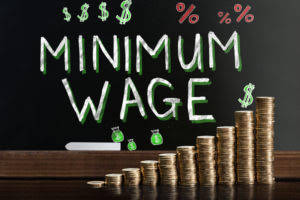
This type of revenue can be achieved through upselling, cross-selling, or introducing new products and services. Incremental revenue is an important part of a company’s growth strategy as it helps to drive top-line growth. what is incremental cost Relevant costs are also referred to as avoidable costs or differential costs. For a cost to be considered a “relevant cost,” it must be incremental, result in a change in cash flow, and be likely to change in the future.
Quality of the Lessee’s Collateral

Since incremental borrowing rates are calculated with the belief that the deal is collateralized, this will generally lower the rate of return compared to that of rates on an unsecured basis. Alternative A reports a net income amounting to $750,000, while Alternative B’s net income totals $855,000. Based purely on the available financial information, the management team should decide to take on Alternative B as a new and/or additional segment. As a business begins earning more profits and is able to see revenues rise, there are going to be more opportunities for growth.

What is Incremental Analysis?
- The use of incremental analysis can help businesses identify the potential financial outcomes of one business action or opportunity compared to another.
- In this case, the incremental cost of $10 is the relevant cost for comparison.
- Previously made purchases or investments, such as the cost of a plot of land or the cost of building a factory, are referred to as sunk costs and are not included in long run incremental cost predictions.
- This represents the estimated borrowing cost for a lease, factoring in the lessee’s creditworthiness and the lease’s specific terms to ensure accurate accounting and reporting.
- They can include the price of crude oil, electricity, any essential raw material, etc.
- To calculate incremental revenue, you first need to identify the total revenue for the period in question.
For the past 52 years, Harold Averkamp (CPA, MBA) has worked as an accounting supervisor, manager, consultant, university instructor, and innovator in teaching accounting online. Get instant access to lessons taught by experienced private equity pros and bulge bracket investment bankers including financial statement modeling, DCF, M&A, LBO, Comps and Excel Modeling. Austin has been working with Ernst & Young for over four years, starting as a senior consultant before being promoted to a manager. At EY, he focuses on strategy, process and operations improvement, and business transformation consulting services focused on health provider, payer, and public health organizations. Austin specializes in the health industry but supports clients across multiple industries. Based on our internal benchmarks of loading 100K JSON files using DLT, stream pipelining can provide up to 5x better price performance than the equivalent ingestion workload on a DLT classic pipeline.

Access Exclusive Templates
Manufactures look at incremental costs when deciding to produce another product. Often times new products can use the same assembly lines and raw materials as currently produced products. Unfortunately, most of the time when manufacturers take on new product lines there are additional costs to manufacture these products. Management must look at these incremental costs and compare them to the additional revenue before it decides to start producing the new product. The long-run incremental cost for lithium, nickel, cobalt, and graphite as critical raw materials for making electric vehicles are a good example. If the long-run predicted cost of the raw materials is expected to rise, then electric vehicle prices will likely be higher in the future.
What Is Incremental Analysis?
In other words, it is the cost of producing one additional unit of a good or service. Incremental costs are important to businesses because they can help decision-makers determine the most efficient and profitable level of production. Certain costs will be incurred whether there is an increase in production or not, which are not computed https://www.bookstime.com/articles/depreciation-tax-shield when determining incremental cost, and they include fixed costs. However, care must be exercised as allocation of fixed costs to total cost decreases as additional units are produced. Incremental cost of capital is a capital budgeting term that refers to the average cost a company incurs to issue one additional unit of debt or equity.
Importance of Incremental Costs
- For example, say production for a certain manufactured good requires a significant amount of oil.
- In a low-cost pricing strategy where the incurred incremental cost decreases production cost per unit, the company may opt to reduce its selling price to stimulate demand and gain a competitive advantage.
- Incremental cost is usually computed by manufacturing entities as a process in short-term decision-making.
- Prior to providing the services, Entity A incurs costs of $100,000 related to data centre migration and testing.
Now, let’s say you are considering expanding your production capacity for maximum raw materials, labor, and location utilization. Companies use incremental analysis to decide whether to accept additional business, make or buy products, sell or process products further, eliminate a product or service, and decide how to allocate resources. Also called marginal analysis, the relevant cost approach, or differential analysis, incremental analysis disregards any sunk cost (past cost). Strategic consideration of incremental costs becomes especially important to avoid the traps of overproduction or underproduction, maximize resource utilization, and maintain a balanced operational strategy.
To fully comprehend the concept of incremental analysis, one has to understand its underlying concepts. The tobacco business has seen the significant benefits of the economies of scale in Case 3. The incremental cost was kept lower at $70,000 while producing twice its production capacity, leading to a higher net income. Incremental costs are additional expenses a business spends to expand production. It is the total amount of money paid for producing an additional unit of a product.

To learn more, contact us or schedule a demo to get started using our cloud-based lease accounting solution right away. If a company cannot determine the implicit rate in a lease, then they must use the incremental borrowing rate. Since it is more often the case that the implicit rate is not available, it’s important to know how to calculate the incremental borrowing rate. The new lease accounting standards (including ASC 842, GASB 87, GASB 96, and IFRS 16) require all leases to be identified under a right-of-use model. Because of this change, any organization that has been granted use of an asset may have to document this asset on a balance sheet. In addition, all leases over 12 months in length have to be documented as assets and liabilities on a company’s balance sheet.
When incremental costs contribute to the rise in product cost per unit, the company may decide to raise the product’s price. The reason why there’s a lower incremental cost per unit is due to certain costs, such as fixed costs remaining constant. Although a portion of fixed costs can increase as production increases, the cost per unit usually declines since the company isn’t buying additional equipment or fixed costs to produce the added volume. Understanding the additional costs of increasing the production of a good is helpful when determining the retail price of the product. Companies look to analyze the incremental costs of production to maximize production levels and profitability. Only the relevant incremental costs that can be directly tied to the business segment are considered when evaluating the profitability of a business segment.

